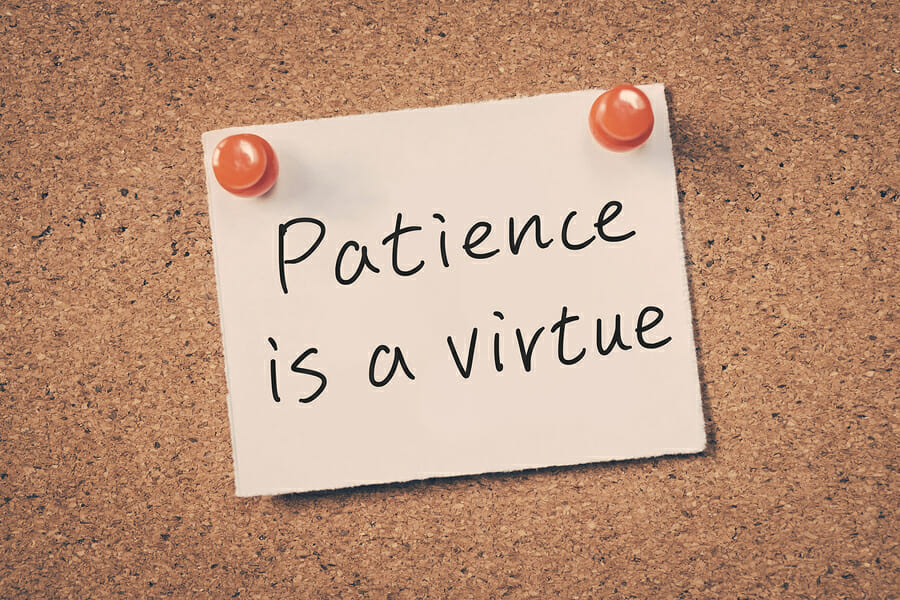Is Patience a Virtue (when a CEO gives direction)?
After reading the book, the authors seem to take a perspective the conversion to a challenger selling model is a problem to be solved within the confines of the sales department. They suggest it might take five years for some organizations to change their sales approach to challenger selling.
As a CEO-Owner-Founder coach, I cannot advise you to have five years of patience. Nor do I agree the issue is solely a sales department issue.
Setting Deadlines
A favorite mentor in my past once told me the test period for a general manager was about 18 months. At that point, you “would know what you have, whether the person was going to make it or not.”
Similarly, when a VC invests in a startup, the funds provided are typically expected to be spent in about 18 months. A founding CEO is expected to show significant results by the 12 month point, and then spend 6 months doing another round of fund raising using the evidence from the initial 12 months to justify continued investment.
I can personally attest, also. For over 30 years in my career, I either had a new boss or a new assignment … every 18 months.
There is something very familiar to me about the 18 month business-breathing-cycle.
I believe the same advice should apply to the transformation of your sales culture. You should be able to execute most of the meaningful changes in 18 months time.
Dixon and Anderson might be correct with their five-year viewpoint IF change is solely driven by the leadership of the sales team. What would be necessary to accelerate change? Read on.
Top Executive Leadership
As in all efforts to drive change in an organization, the role of the CEO, Owner, or Founder is crucial to success.
The first obligation for the top executive is to ensure their sales and marketing leadership positions are staffed with people intellectually and emotionally aligned with the direction the CEO wishes to pursue. The make-up of the team is the responsibility of the CEO. They are responsible to determine the selection of their next level reports and the retention of the same.

Misalignment is a sure way to fail, a sure way for any initiative to fail.
The second obligation is to give public, persistent support to the sales and marketing leadership. As in raising children, there should be no daylight showing between the opinions of “mom and dad”.
There is always momentum to the way things have been done in the past. People in the organization will find ways to push back on change. Persistence is a way to succeed.
The top executive behavior which would most concern me is indifference to sales and marketing initiatives. I’ve worked in companies where the top executive remained personally passive to the efforts of their sales and marketing organizations.
I remember one situation where the new president of our company put his desk smack in the middle of the sales and marketing departments soon after he joined the company.
His predecessors treated sales and marketing passively and the sales and marketing teams were used to operating without direction from the top. It was a culture shock for them to learn the new president assumed the responsibility and authority to give direction to their organizations.
High-performing top executives know the power of demonstrated leadership.
 About the Author: Bob Kroon is a coach for high-performing Founders, CEO’s, and Owners. He founded Expeerious, LLC (expeerious.com) in 2015 to exclusively focus on coaching the success of Top Executives. For over 25 years, Bob served variously as CEO, COO, Division President, and Group Vice President.
About the Author: Bob Kroon is a coach for high-performing Founders, CEO’s, and Owners. He founded Expeerious, LLC (expeerious.com) in 2015 to exclusively focus on coaching the success of Top Executives. For over 25 years, Bob served variously as CEO, COO, Division President, and Group Vice President.
The majority of his career was in manufacturing durable goods. Bob is an enthusiast and practitioner of Lean Thinking since 1986. He also has broad skills in M&A including financial modeling, deal structure, diligence, and post-close integration.
Bob’s current clients are diverse and include businesses in healthcare, agricultural products, robotics, luxury goods, and education.
To learn more about how Bob coaches and thinks, you can find over 200 questions he’s answered on Quora. Visit his website at: www.expeerious.com for additional blog posts.

